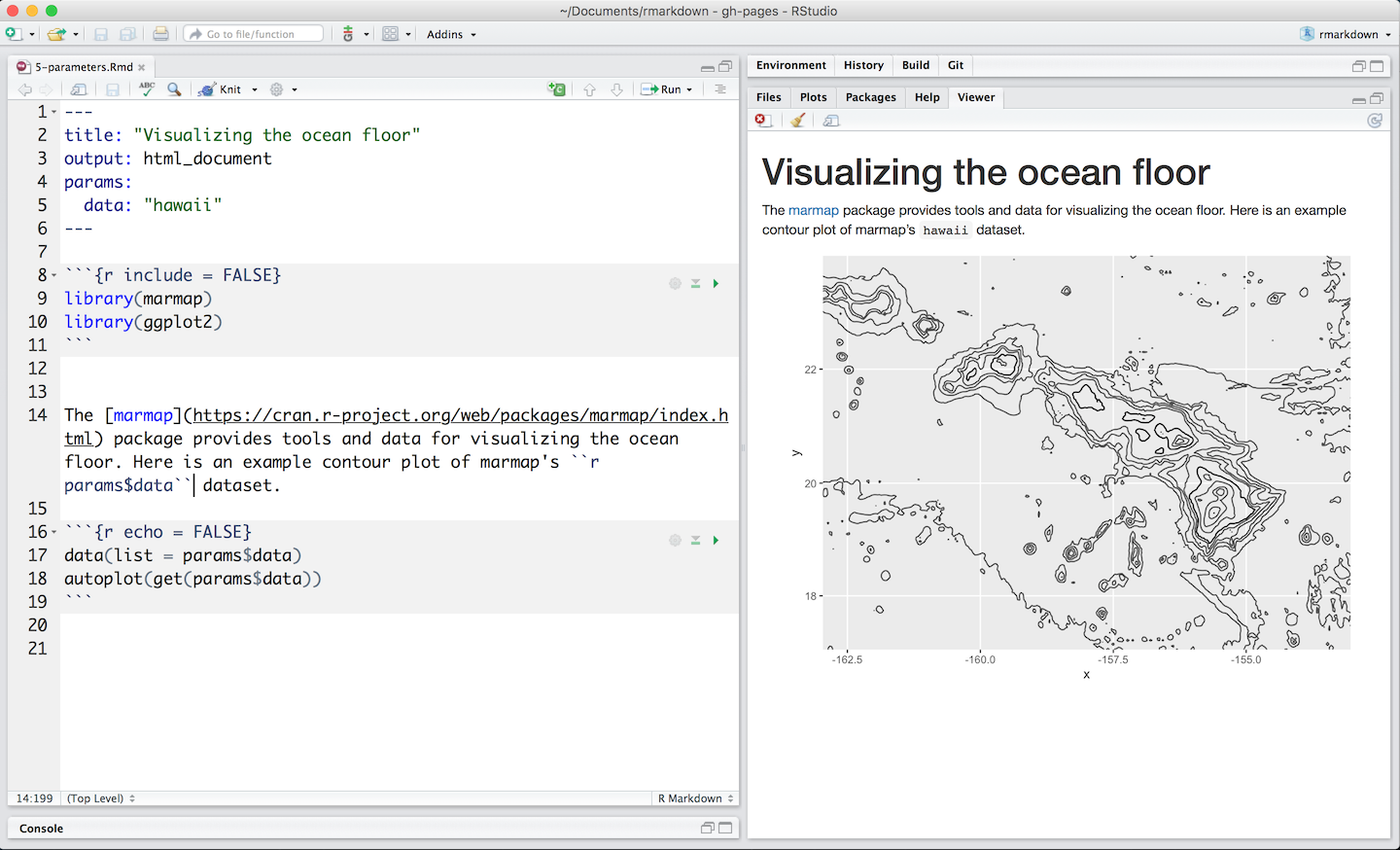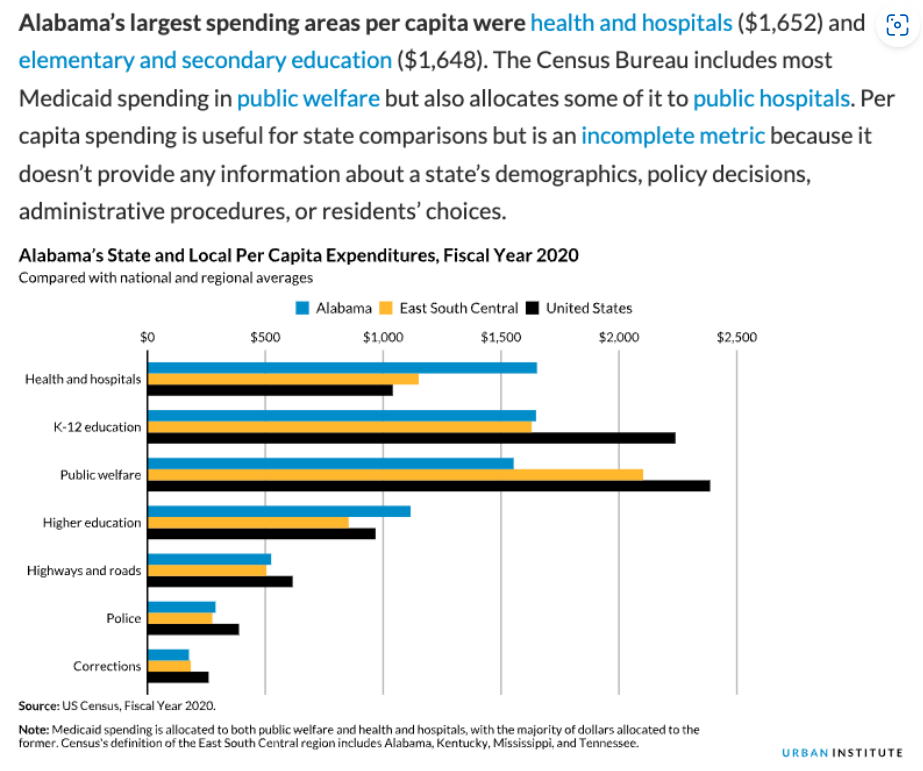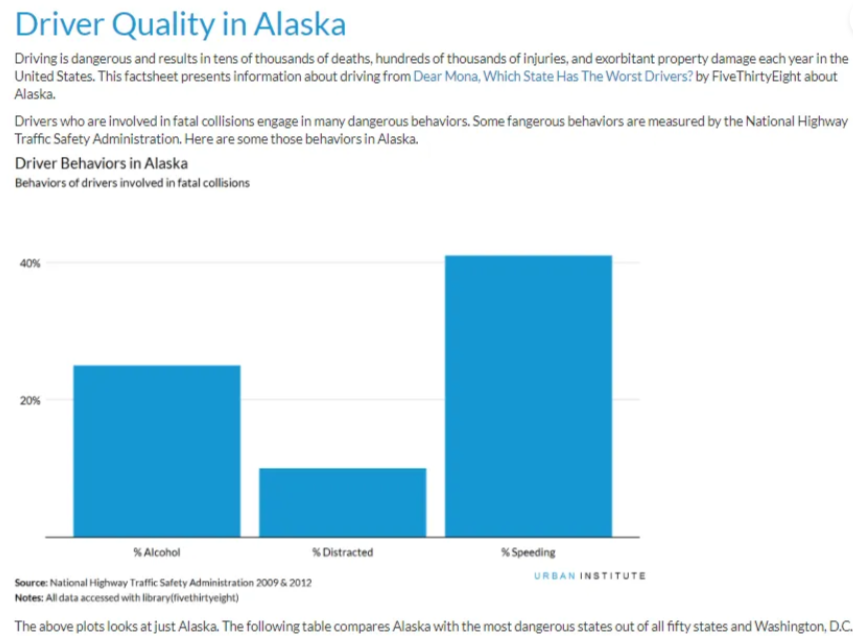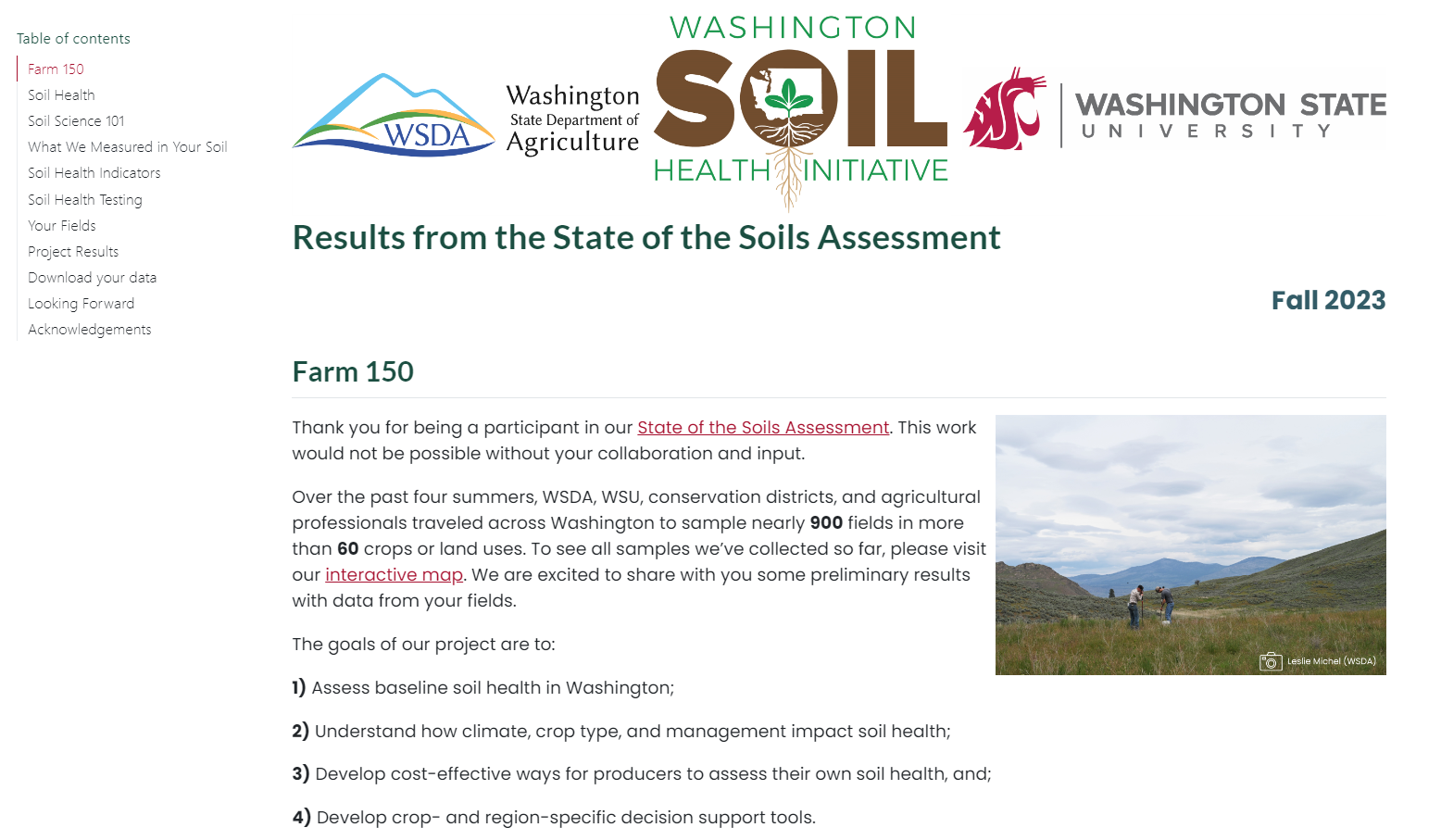05:00
Parameterizing reports
![]()
Intermediate Quarto // Cascadia R Conf
Examples of parameterized reports
Another use case: different audiences, different reports
Show code for technical staff and hide code for everyone else (StackOverflow example).
Like a custom function
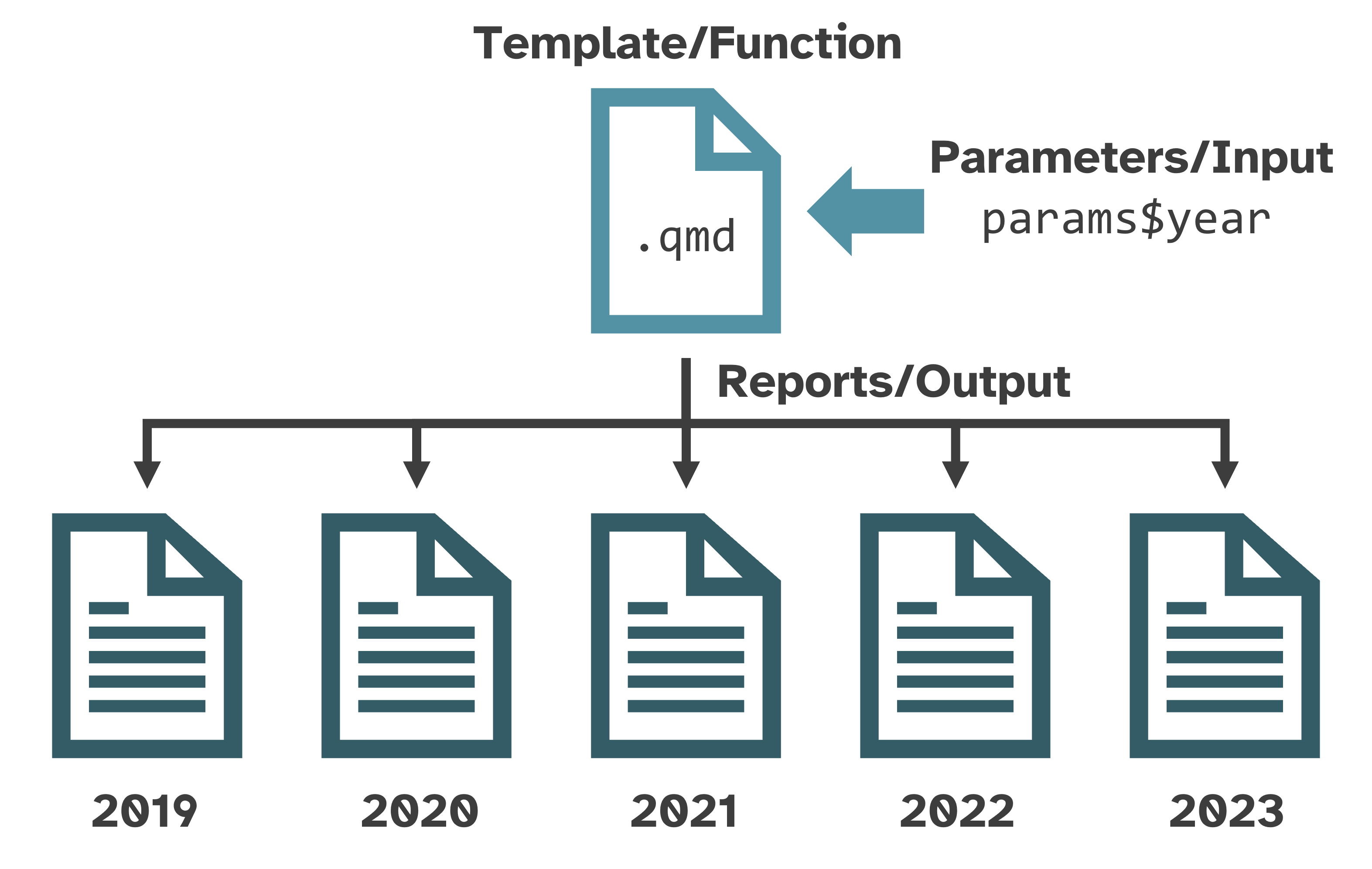
What makes a report “parameterized”?
YAML header with
paramskey-value pairsUse these
paramsto create different variations of a report from a single.qmddocument.
Important
Valid parameter values are strings, numbers, or Boolean.
Must serialize a dataframe to pass it as a parameter, then un-serialize it back to a dataframe within the
.qmdcontent.See Christophe Dervieux’s answer in Posit Community to understand why.
See John Paul Helveston’s blog post to learn how to use {jsonlite} as a workaround.
Workflow
Write report template with default values hard-coded, and then render & review.
Set default
paramskey-value pairs in YAML.Replace hard-coded values with the
paramsvariables.Render the single report and review.
Render extreme cases and review.
- Parameter values with barely any data and with tons of data.
Render all variations of the report at once.
💪🏼 Exercise
Explore a report without parameters and see where we could add them.
Open
1-swiss-cats.qmd.Click the
![Quarto render button in RStudio]() Render button.
Render button.Look at the source markdown & code and the rendered report.
💬 Chat: What variables could we set as parameters?
💡 Hint: run the
setupchunk and look at thepetsdataframe to see what variables it has.
Set params in YAML header
---
title: "Swiss Cats" # Metadata
format: # Set format types
html:
toc: true # Set additional options
docx: default
params: # Set default parameter key-value pairs
fave_breed: "Snowshoe"
---
Report content goes here. # Write narrative and codeImportant
Your default params key-value pairs must be found in your dataset. Otherwise, code will error or output will be blank.
The variable name for params can be anything you choose. Often, it’s a column name in your dataset.
Access params
Run any line or chunk to add params to your environment.
Replace hard-coded values with params
Cmd/Ctrl + F to find where to replace hard-coded values with params.
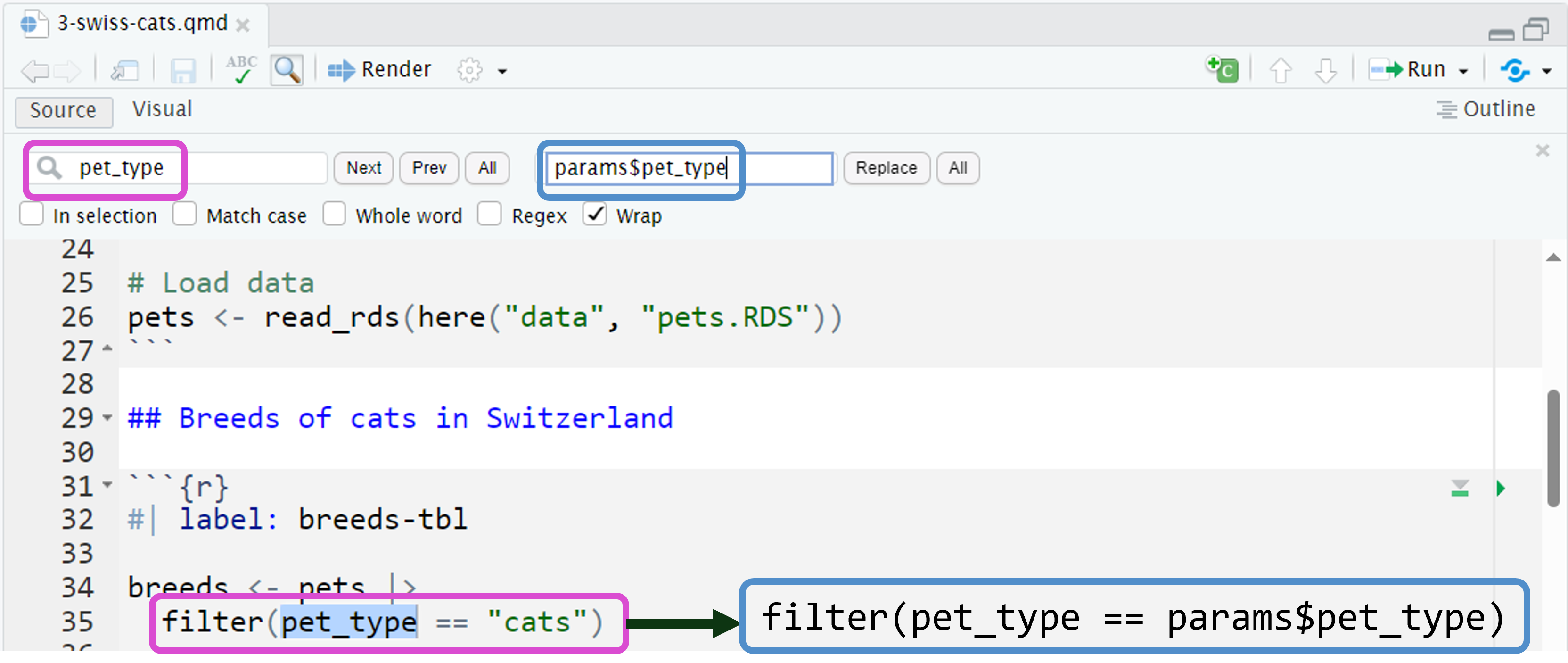
Replace hard-coded values with params
Use $ list notation in code for plot/table titles and labels, filtering, etc.
paste() syntax:
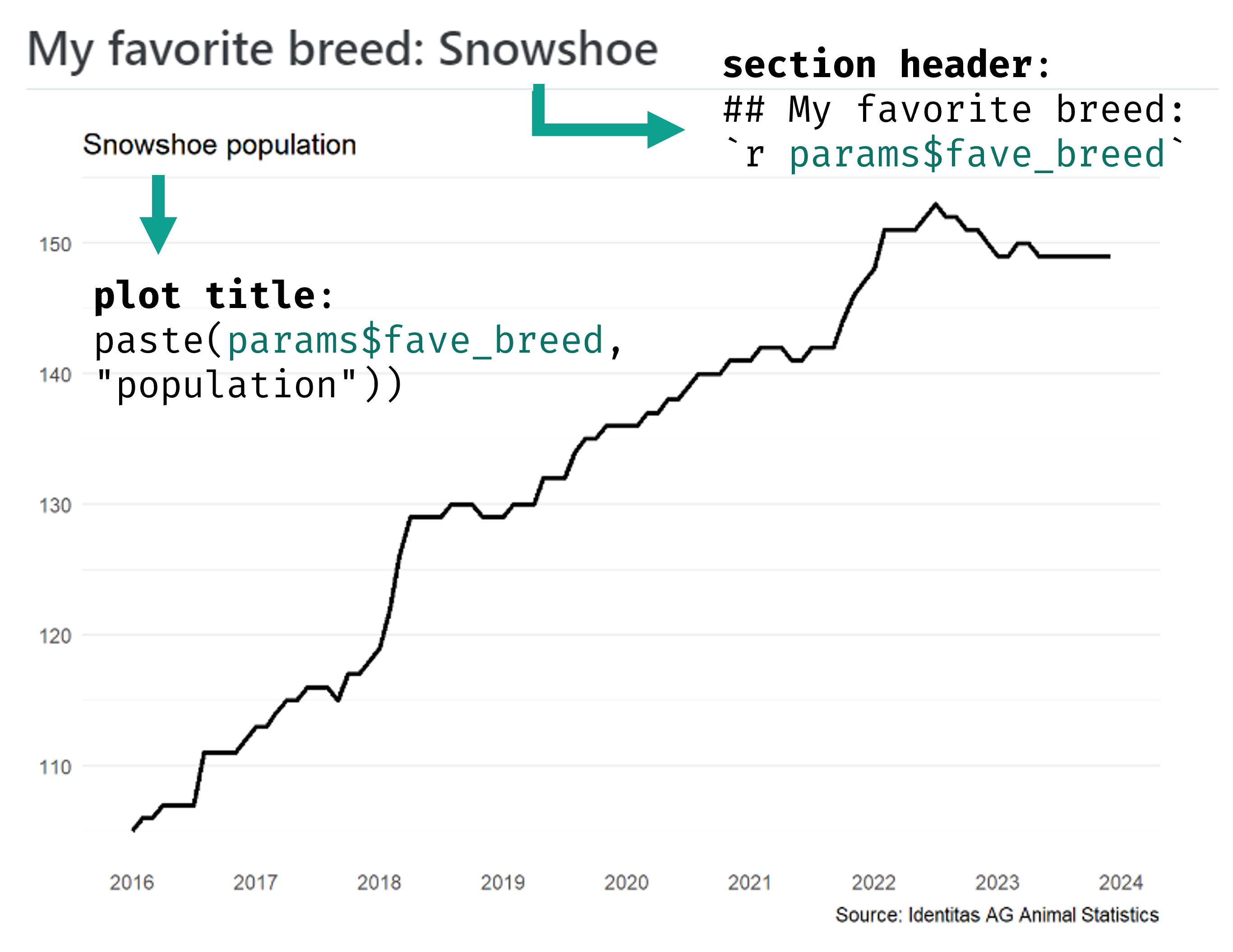
💃🏻 Demo
Modify 1-swiss-cats-demo.qmd to add pet_type and fave_breed parameters.
This parameterized version of 1-swiss-cats.qmd is the starting point for the next section’s exercises (2-quarto-render.qmd).

